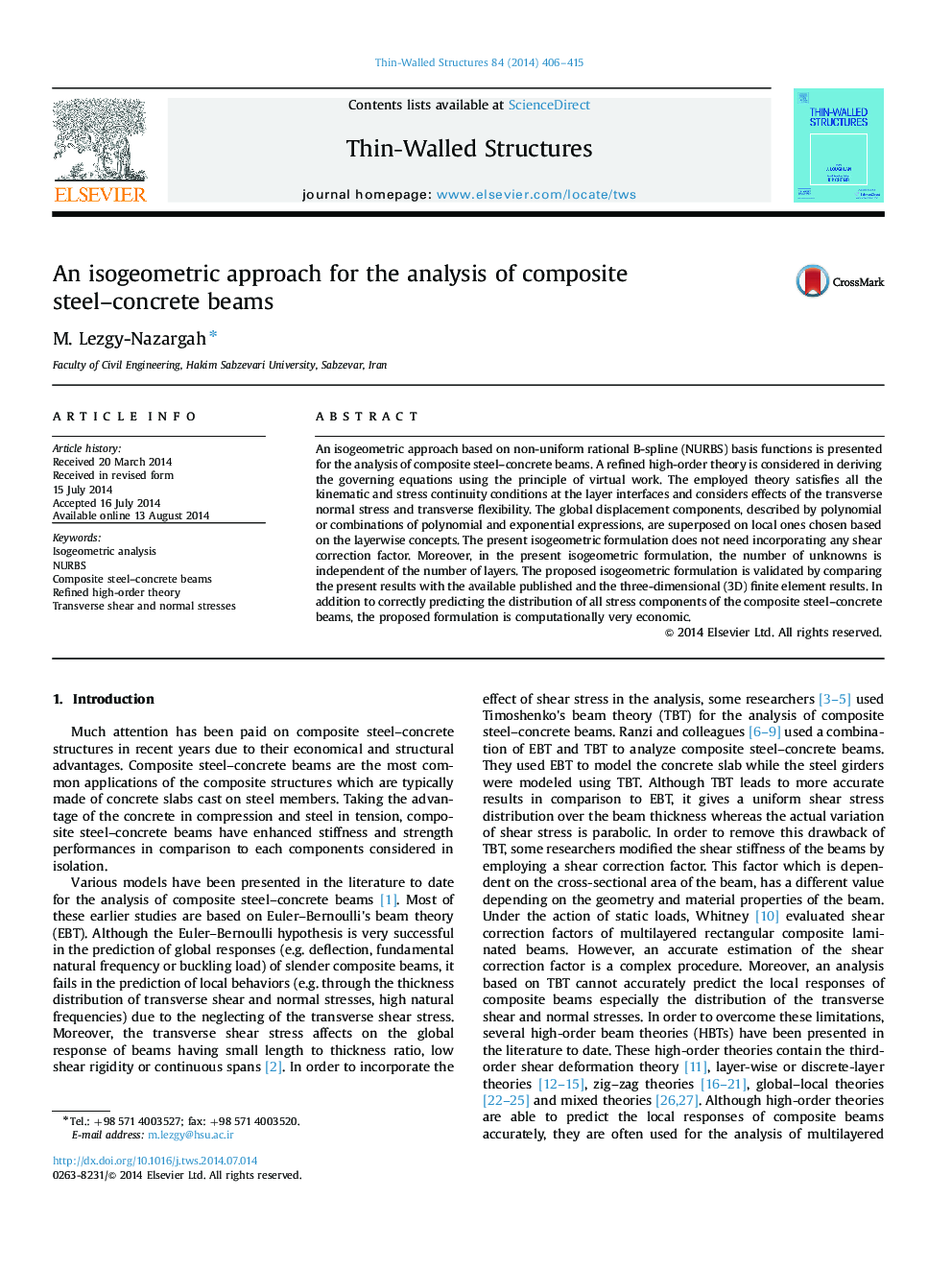| کد مقاله | کد نشریه | سال انتشار | مقاله انگلیسی | نسخه تمام متن |
|---|---|---|---|---|
| 308851 | 513569 | 2014 | 10 صفحه PDF | دانلود رایگان |
• An isogeometric approach is presented for the analysis of composite steel–concrete beams.
• The present formulation does not need incorporating any shear correction factor.
• The present isogeometric formulation can predict the local responses of the composite steel–concrete beam accurately.
• The proposed isogeometric formulation is computationally very low cost.
An isogeometric approach based on non-uniform rational B-spline (NURBS) basis functions is presented for the analysis of composite steel–concrete beams. A refined high-order theory is considered in deriving the governing equations using the principle of virtual work. The employed theory satisfies all the kinematic and stress continuity conditions at the layer interfaces and considers effects of the transverse normal stress and transverse flexibility. The global displacement components, described by polynomial or combinations of polynomial and exponential expressions, are superposed on local ones chosen based on the layerwise concepts. The present isogeometric formulation does not need incorporating any shear correction factor. Moreover, in the present isogeometric formulation, the number of unknowns is independent of the number of layers. The proposed isogeometric formulation is validated by comparing the present results with the available published and the three-dimensional (3D) finite element results. In addition to correctly predicting the distribution of all stress components of the composite steel–concrete beams, the proposed formulation is computationally very economic.
Journal: Thin-Walled Structures - Volume 84, November 2014, Pages 406–415
